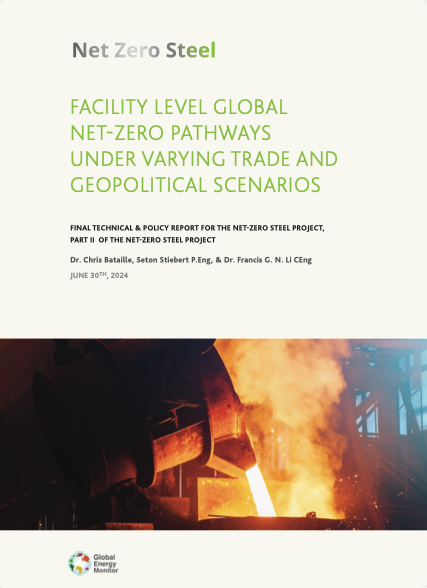Net zero industry is possible,
but it means that by the end of this decade
all new & retrofit facilities globally must be clean
The industrial sector is a significant contributor to global GHG emissions, accounting for approximately 30% of total emissions. As such, achieving net zero emissions from industry is a crucial component in the effort to mitigate climate change and limit global warming. Reducing greenhouse gas (GHG) emissions from industrial processes is accomplished by reducing emissions through increased efficiency, transitioning to renewable energy sources, and/or implementing carbon capture and storage technologies.
Many countries, companies, and organizations have set targets to achieve net zero emissions from industry by 2050 or earlier, and are investing in new technologies and infrastructure to make this goal a reality. Key strategies include electrification of industrial processes, development of low-carbon materials, and circular economy approaches that prioritize reuse and recycling of materials. The transition to a net zero industry will require significant collaboration between governments, industry leaders, and the public, as well as sustained investment in research and development.

June 2024
TECHNICAL REPORT – PART II
FACILITY LEVEL GLOBAL NET-ZERO PATHWAYS UNDER VARYING TRADE AND GEOPOLITICAL SCENARIOS
Dr. Chris Bataille, Seton Stiebert P.Eng, and Dr. Francis Li CEngPublication
Key messages
- A global transition to net-zero CO2 emissions steel by midcentury is possible through maximizing volume and quality of recycled steel from 25 to 50%+ of production, paired with several possible near zero emissions iron ore reduction technologies
- Chinese capacity to make emission intense BF-BOF primary steel will soon exceed its demand. If Chinese firms can be persuaded to close the least efficient facilities with the worst air quality impacts this would leave more global market share for new clean iron ore reduction facilities, inside or outside of China.
- The next few years are critical to reorientate the global steel industry toward net zero emissions by mid-century. It takes at least 5 years from project inception to production for new iron ore reduction facilities, usually much longer, and any new reduction facilities built in the 2030s will be operating in the 2050s.
- Given most new demand for steel is outside developed countries, even a club of ambition that included the European Union, North America, South Korea, Japan, Australia and New Zealand (Narrow Club in this report), would not be large enough to transform the global steel industry by itself. This is true even if the rest of the world adopted significant carbon pricing policies (e.g., rising to $100/t CO2e by 2050). A broader club including for example India is required.
- Lead markets, especially for the first round of low GHG intensity iron ore reduction projects, are necessary to establish demand and investment certainty for clean iron ore reduction. This can be established through government preferred and subsidized procurement (e.g, through contracts for difference), through production tax credits like the IRA, or perhaps through something like the tradable Zero Emissions Vehicle mechanism, e.g., a Zero Emission Iron instrument.
- Reasonable cost finance is necessary to fund risky and expensive upfront investment, especially in developing countries. For at least the first round of projects in developing countries some form of risk reduction or concessional finance mechanism is necessary.
- Trade in low GHG intensity green hot briquetted iron (HBI) from multiple suppliers offers flexibility, security, and a means to transfer electricity and hydrogen consumption where it is cheapest and cleanest, as well as adding value to scrap for mixed primary & secondary production. We found it could reach at least 10% of global production, limited only by available iron ore resources. To reach its potential, however, it requires clear trade rules and tariffing that accurately assesses GHG intensity for all traded steel and iron.
Last publications and events
Net-zero Steel One Page Summary
The why and how of net-zero steel.
A summary of what we found, and how.
Dr. Chris Bataille, Seton Stiebert P.Eng, and Dr. Francis Li CEng
Net-zero Steel Policy Summary
How do we achieve net-zero steel?
A short summary of policy needs and options.
Dr. Chris Bataille, Seton Stiebert P.Eng, and Dr. Francis Li CEng
Net-zero Steel Technical Report I
Facility level net-zero steel pathways: Technical report on the first scenarios of the Net-zero Steel Project.
Dr. Chris Bataille, Seton Stiebert P.Eng, and Dr. Francis Li CEng
Please contact Dr. Chris Bataille at info@netzeroindustry.org with any question.

